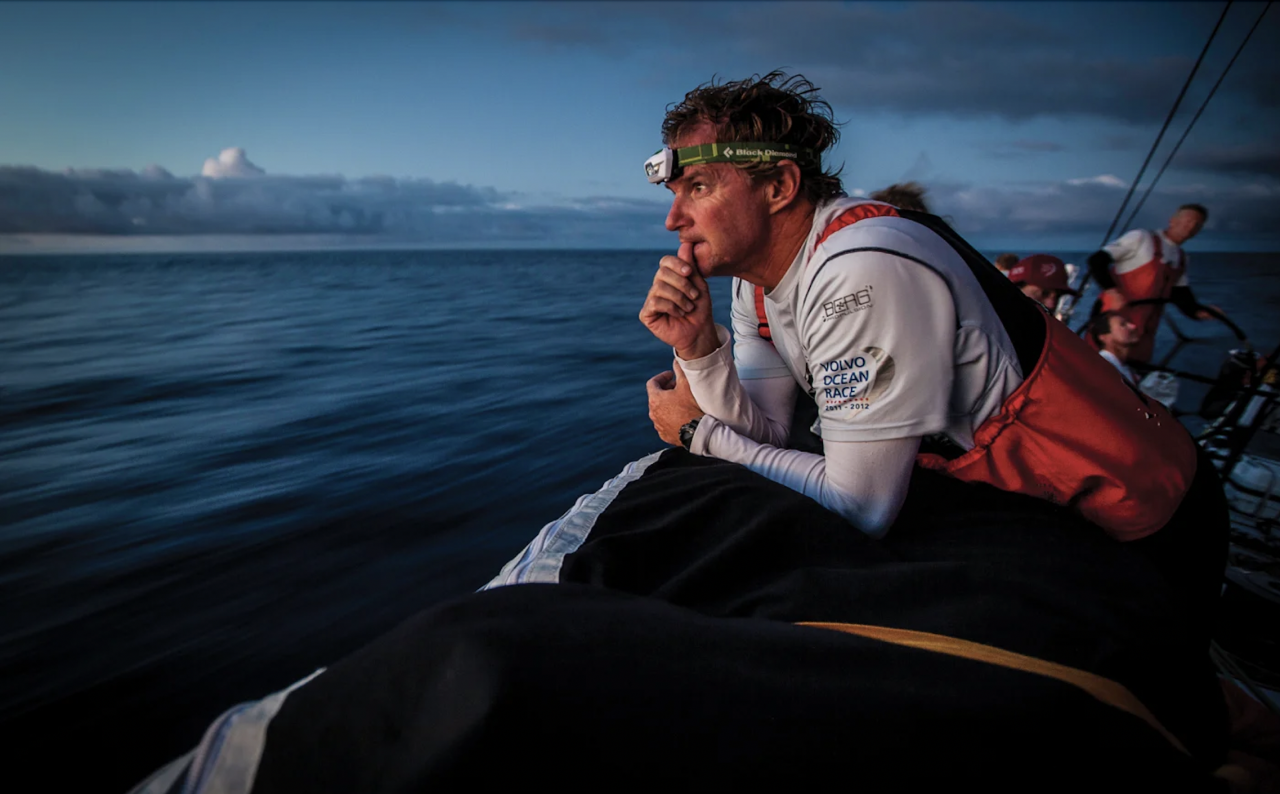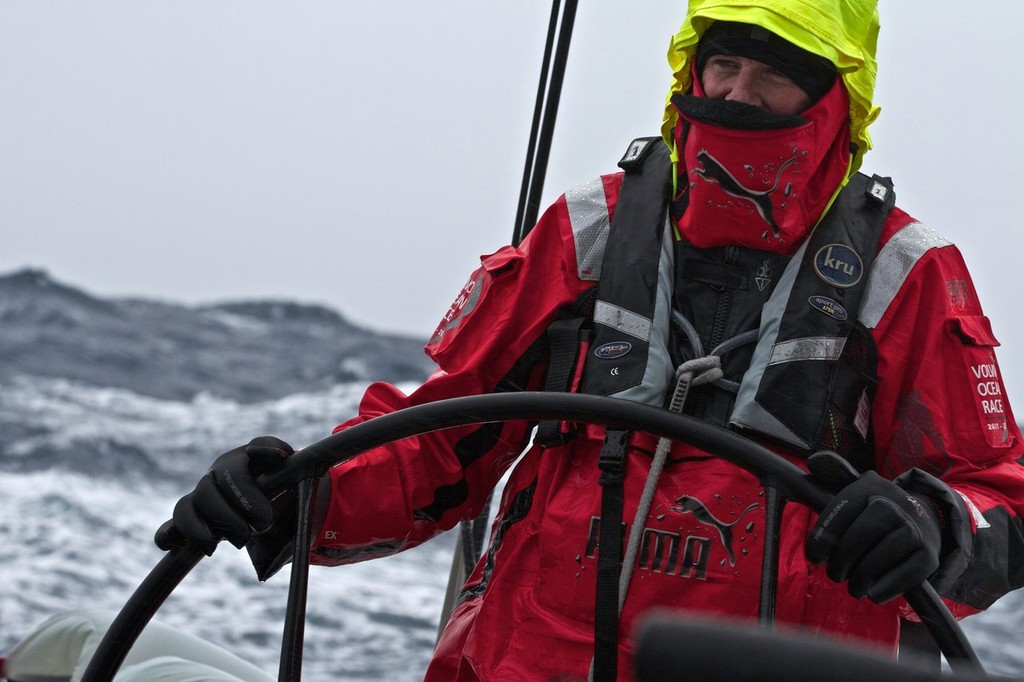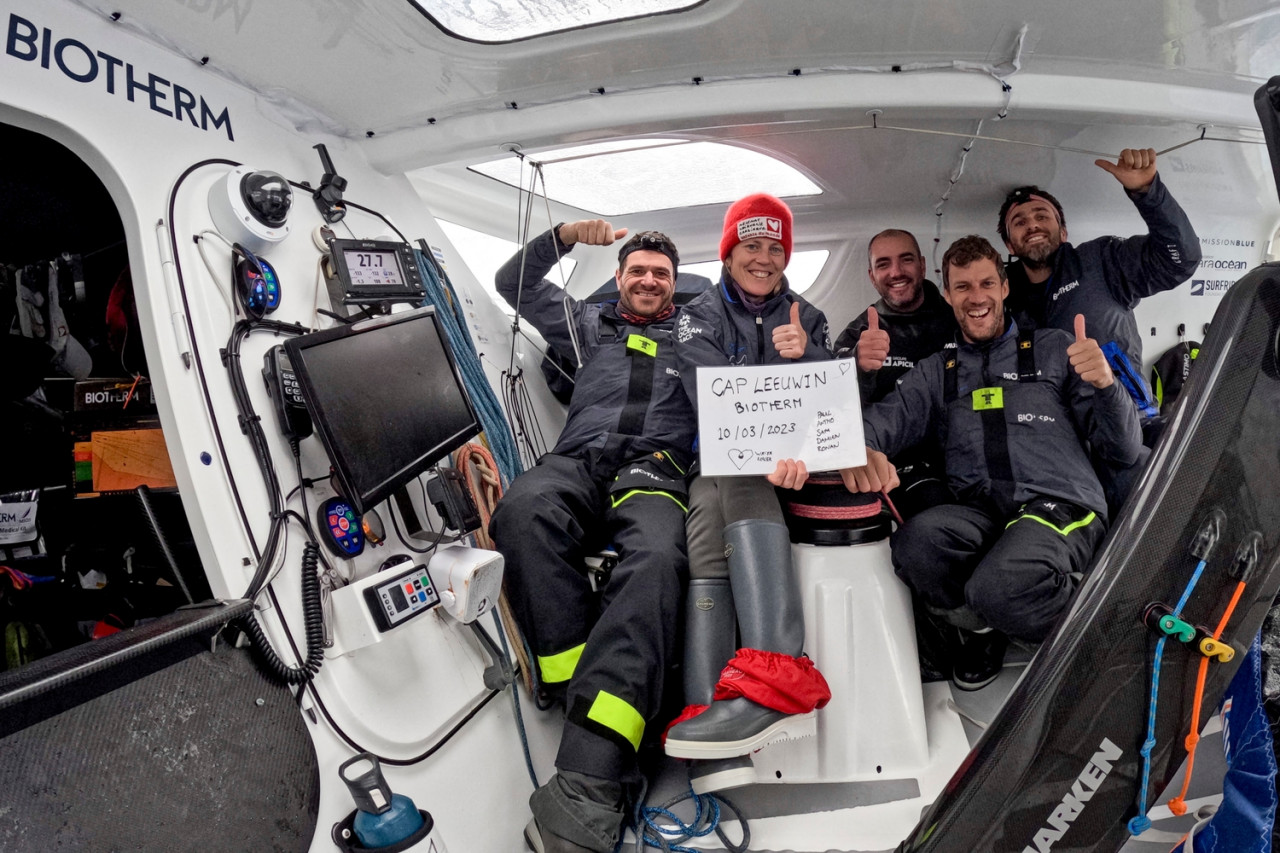Ken Read: The team that adapts best to the demands of coastal racing will win The Ocean Race

A veteran of the America’s Cup, three Volvo Ocean Races and a load of big and small boat racing, Ken Read knows a thing or two about how the end game in big races can play out.
And with this The Ocean Race he says it’s going to be all about which IMOCA team adapts best to the demands of coastal racing in the final two legs, after the big trans-oceanic stages that dominated the early part of the race.
The President of North Sails and the North Technology Group, Read, 61 – an American who hails from Rhode Island – is in Europe for the Georgio Armani Superyacht Regatta at Porto Cervo in Sardinia, where he took time out to talk to the Class.
Asked to make a prediction on the outcome, with two legs to go and 11th Hour Racing Team just one point ahead of Team Holcim-PRB, he resisted the temptation. “Well, I would never be crazy enough to make a prediction,” he joked. “I think the unpredictability of the race is my prediction.”
So what will it take to prevail by the finish at Genoa? “I just think it will be the team who can make the mental and physical switch to a totally different style of sailing – it could be a different watch system, it could be a different group of people on board – perhaps specialists in certain areas – that makes the difference,” he said.
The skipper of Puma in both the 2008-09 race (second overall) and the 2011-12 edition (third), Read says the final two legs will leave little room for error. “Ocean racing and coastal racing are completely different – it’s almost like chalk and cheese,” he explained. “It is a completely different mindset and in many ways coastal racing is harder because every detail is magnified. You can’t make a mistake if you only have a week to catch it back up. You can’t have a bad sail change so every headland, every tidal stream is magnified and your lack of sleep works against you. There is very little watch systems at this stage, you’re sleeping in your foul weather gear the whole time – the list goes on… Everybody thinks it’s easy because there are a few hundred, or a couple of thousand miles left, but they are sadly mistaken because it is – as I always say – as hard as you want it to be. And when these guys are fighting to win The Ocean Race, they are going to make it hard on themselves and they are going to push for every single millimetre.”
In recent weeks, Read has had something else to think about – seeing his 24-hour distance monohull world record, that he helped set as skipper of the 100ft maxi Comanche in 2015, smashed by the leading IMOCAs on the transatlantic sprint from Newport to Aarhus. He notes that weirdly, the IMOCAs went past Comanche’s mark in almost the same area of the north Atlantic that Read and his crew were sailing in when they set the record. © Amory Ross / Puma Ocean Racing / Volvo Ocean Race
© Amory Ross / Puma Ocean Racing / Volvo Ocean Race
He says that given the “amazing capabilities” of the latest foiling IMOCAs, this record is now all about sea and weather conditions and the very rare opportunities that crews will get to set a new mark. “You have to be exceptionally lucky,” he said. “You could have the fastest boat on the planet and the chances of breaking the 24-hour record are literally slim-to-none unless you get some sort of weather system that you can get out in front of, which means the sea state hasn’t built up – and it is moving along at an appropriate clip. Any boat like Comanche, or these foiling IMOCAs, are capable of higher average speeds, it’s all about how fast the system is moving, or whatever you are in front of, and the sea state.”
Surveying the IMOCA Class more generally, Read believes it has made big steps to internationalise its appeal and attract more sailors and commercial partners from outside France. “It is absolutely becoming more international and more people outside of France are absolutely aware of it,” he said. "The 11th Hour Racing Team programme certainly did big things to spread the word, especially on the east coast of the US, so that is always good. We probably don’t see it as much in the US as in Europe, but the internationalisation of the class is happening and it’s working and it’s only good for the health of the class.”

Read believes the advent of the drone has been a game-changer for IMOCA (in comments which can only encourage solo skippers to start using them as well as OBRs). “It’s taken a class like IMOCA to incredible new heights,” he said. “Without drones, nobody knows – it could be the most exciting boat in the world. The most down-played aspect of modern sailboat racing is drone footage and just showing what the Southern Ocean is really like, and what going round Cape Horn is really like. You take this to the extreme and you have boats in the middle of the Southern Ocean literally flying and with the crew hooting and hollering down below. It brings a new excitement level to the sport.”
In the context of the Vendée Globe, which remains the principal focus of almost all IMOCA skippers, Read believes The Ocean Race will now be seen by leading teams as a vital test-bed for a competitive solo circumnavigation. “I would say it is the ultimate in-boat preparation for any sort of single-handed racing, if that’s what you wanted to do,” he said. He added that when preparing for racing double-handed he always prefers to sail with more people on board because that way you get through far more work and push the boat harder, just as the crews have been doing in The Ocean Race.
 © Ronan Gladu / Biotherm
© Ronan Gladu / Biotherm
With North Sails supplying their products to many of the IMOCA teams, Read is well aware of the challenges facing the company in a Class where performance is increasing (literally) by leaps and bounds. He says the fact that crews on the latest designs are now out of the weather and down below for most of the time can have consequences for sails on powerful winches during manoeuvres, when visability of the rig is compromised. And he said the company is always trying to improve the products it offers.
We asked whether the experience of The Ocean Race as far as sails go would now filter through to the sails supplied to Vendée Globe skippers. “Oh 100%, not even 99%,” he said. “Every offshore race in a way feeds into the next one. It doesn’t even have to be IMOCAs. There are examples of every bit of ocean racing in general in every sail we make. I am very confident that IMOCAs are trickling into other offshore racers, and other offshore racers are equally trickling into IMOCAs, and the product is better because of it.”
Ed Gorman
Teams info
Clarisse Crémer: “I felt all the energy of my team to get me back on the water as soon as possible”
After a week of uncertainty following the discovery of major damage on her boat during The Transat CIC race onboard the IMOCA L'Occitane en Provence, Clarisse Crémer hopes to soon be able to continue her race towards New…
•••Yoann Richomme: Pinching himself after victory in The Transat CIC
Many of the IMOCA skippers in The Transat CIC have been dreaming about completing the race and gliding past the Statue of Liberty after the finish, and earlier today race winner Yoann Richomme did exactly that.
•••